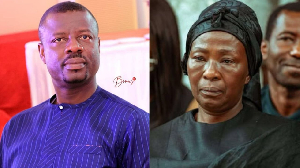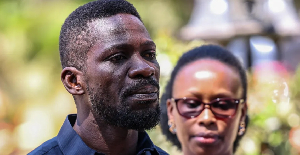History has it that Cape Coast is the birthplace of football in Ghana and the credit goes to students of the local Government Boys School. Inspired by a Jamaican Headmaster, Mr. Briton, the students were already sports conscious playing cricket and tennis. The enthusiasm with which the students followed sports was fantastic.
Few foreign newspapers were already in circulation in Ghana and the students were thrilled about football reports they read from an English newspaper.
In 1903.backed by the sports enthusiast headmaster, a group of 22 keen pupils of the Cape Coast Government Boys School embarked upon a secret training course in footballing. The young lads trained mostly in the night, when the full moon was on at the Victoria Park, then a well- kept place for official ceremonies.
Impressed by their own progress the group of soccer pioneers arranged and ordered some equipment ? jerseys (red and yellow stripes) white long running shorts, pairs of hose, football boots and caps. The first footballs used by the pioneers were gifts from friendly sailors who docked regularly at Cape Coast Port. Most of the sailors who landed ashore were keen sportsmen and played games regularly with the Governor of the country are the many European civil servants in the capital.
The happy band of soccer adventurers who called themselves Excelsior continued with their secret training and after three months planned a grand out-dooring ceremony at the Victoria Park on Boxing Day December 26.
Cape Coast Victoria Park was lined and marked. Goal posts were fixed and the first football pitch in Ghana was thus created. In the presence of top government officials the first two teams from the first football club of the country merged to introduce the game to the country. Although the match was played without any set rules the excited crowd cheered throughout and thoroughly enjoyed themselves as they watched 22 youngsters running around and kicking a globular object. It was a memorable occasion that was graced with the presence of the then Governor Sir Frederic Hodgson, himself a keen sportsman. It is significant to note that Excelsior played in boots from the very day they introduced football into the country.
With the warm reception received the young boys of Excelsior intensified their training and soon their popularity spread beyond Cape Coast. Having now mastered the rudiments of the game Sir Frederic arranged for them to play their first challenge match against a European side comprising sailors from a ship that had docked at Cape Coast port and some Europeans resident in Cape coast.
Excelsior lost the exciting match 2-1 but they really gave a good account of themselves. By popular request a return match was arranged later and Excelsior avenged defect 3-1.
Regular friendly fixtures were arranged for Excelsior and white civil servants in Cape Coast. Ships docking at the Cape Coast harbour supplied, at frequent intervals, sailor teams who also played with the pioneer team of Ghana. This exercise enabled Excelsior to improve by leaps and bounds.
The early matches were officiated by Europeans but in 1905 a few Africans studied the laws of the game and began to handle matches. The game quickly captured the fancy of the youth of Cape Coast and like mushrooms clubs sprang up in the town.
At the time the game of football was introduced into the country traveling was mostly on foot and so the football gospel did not travel fast. After playing for several months Excelsior, moved to nearby towns and played demonstration games. This crusade proved extremely successful and within a matter of months the new game was being played with amazing zeal at Elmina, Saltpond and Winneba.
Cape Coast, the original home of Ghana football dominated the local soccer scene until the middle forties. Clubs were formed and reformed. Evertons, Blankson?s XI, Energetic, Sports, Swallows, Rose XI, Bolton Wanderers, Judges, Gardens, Titanics and Majestics have all faded away but today Venomous Vipers and Mysterious Dwarfs have sprung up from the debris. to uphold the proud tradition of Cape Coast football.
The exciting stories of the new game gradually traveled through traders and fishermen to Sekondi-Takoradi. Real football life in the Sekondi-Takoradi area started with the construction of the railway line as the cream of the players was centred in the railway workshops. The formation of a powerful non-departmental team, Eleven Wise in 1919 marked the beginning of soccer development in the Sekondi-Takoradi area. Some of the early clubs were Mosquitoes, Western Wanderers, Jericho, Railway Apprentices, and Ga United.
In 1925 Mr. Semmer Wilson, District Commissioner of Sekondi-Takoradi, formed the District Football Association. which later developed into the Western Region Football Association. The year also saw the birth of Fanti United football club which later reformed into Hasaccas now one of the formidable clubs in the Western Region.
It was nearly twenty years after the introduction of football in Cape Coast that the game reached Kumasi, the Garden City of Ashanti in 1920.
In 1926, the first all Ashanti football club. Ashanti United which in the thirties developed into the present powerful Asante Kotoko, was formed by 13 young Ashanti boys headed by a young driver Kwasi Kuma and L.Y. Asamoah, a private electrician. The team was later on re-named Mighty Atoms and in 1935 Atoms re-organized and christened Asante Kotoko by J.S.K. Frimpong with the permission of Otumfuo, Asantehene.
The Kumasi Jackson Park was built in 1935 and it became the central venue for all matches in Kumasi.
The game reached Accra quite early and by 1910 Invincibles,the first football club ever to be formed in Accra was organized in James Town. Inspired by an acute sense of rivalry, boys in Ussher Town accepted the challenged and .in 1911 founded Accra Hearts of Oak which is today the oldest existing club in Ghana. By 1912 clubs like Energetics, Never Miss, Royalists, Osu Pioneers, Africa, Wolves, had all been formed.
Football organization in the country has come a long way since those early colonial days when Excelsior was born. Soccer historians tell us that it was around 1943 that some effort was made at the control and organization of the sport from Accra.
The early 40?s brought onto the undefined soccer scene Mr. Richard ?The Lion Heart? Akwei, the man who was to make so much impact on the early days of organized football in Ghana.
First, his efforts were directed at getting the Accra Football Association on solid grounds. Then around 1947, Mr. Akwei, described as shrewd soccer organizer, mooted the idea of bringing together the major associations that had sprung up in the country. But the baby was not to be spared the usual teething problems. First, a serious split in the Accra Association had a corresponding effect on the national body and two national associations emerged from the crisis.
Mr. Akwei became the president of the Gold Coast Football Union. The other, dubbed the Gold Coast and Ashanti Union had Mr. John Darkwa of Kumasi as chairman, with Mr. A.W. Mills of Accra as secretary.
It was the projected tour of the United Kingdom by the Gold Coast national team in 1951 that brought the two factions together At an historic meeting at the Hudson Club, Kumasi on Oct. 29, 1950, the two sides agreed on the formation of a United Gold Coast Amateur Football Association. Mr. Darkwa became the first chairman and Mr. Richard Akwei, the Vice Chairman.
But peace was not to be given much of a chance, even after this union. Soon after the 1951 United Kingdom tour, Mr. Richard Akwei was voted chairman of the Union at an election in Accra and that was to mark the beginning of a fresh crisis in the country?s soccer administration.
It was this very crisis that culminated in the so-called Reformation Era that eventually gave birth to the national soccer league. The definitive turn of events leading to the reformation in 1958 was nurtured by the Ashanti Football Association and fueled by the trenchant pen of Mr. Kofi Badu, undisputably the greatest sportswriter this country has ever produced.
For a sustained period a relentless battle was waged to remove Richard Akwei from the seat of Ghana football power. The culmination of these efforts came on September 8, 1957 when, at a general meeting of the Ghana Amateur Football Association held at Legion Hall, Accra and presided over by Sir Leslie McCarthy, chairman, of the Ghana Amateur Sports Council, Mr. Akwei resigned.
In appreciation of his great pioneering role in the evolution of the country?s soccer, Mr. Akwei was made special Life Patron of the Ghana Amateur Football Association. Thus ended one era, and thus began another, to be dominated by one man ? Ohene Djan!
Thirty-three years old, full of fresh ideas, dynamism and enthusiasm, Mr. Ohene Djan stepped into the shoes of ?The Lion Heart? as the unanimously elected Chairman of the Ghana Amateur Football Association (GFA).
The first attempt at organizing a national league was during the turbulent last days of Mr. Richard Akwei in 1959. It was an idea mooted by an Englishman, Mr. Ken Harrison resident Manager of a trading firm, R.E. Harding & Co. This maiden contest was, however, poorly organized.
Asante Kotoko and four other Kumasi based teams ? Cornerstone, Great Ashanti, Dynamos and Evergreens ? boycotted it. The Richard Akwei administration reacted by suspending them. The competition thus took off with only the teams from the south. In the ensuing confrontation, the four boycotting clubs were able to get some others to join them, thus wrecking the league and flouting the authority of the GAFA.
The competition was eventually left with only Accra Hearts of Oak and Sekondi Eleven Wise who were later declared respectively gold and silver medallists. This was perhaps the beginning of the ?traditional? friendship between Hearts and Wise.
The 14 clubs that originally entered the competition were Accra Hearts of Oak, Accra Great Olympics, Accra Standfast, Accra Great Argonauts, Cape Coast Venomous Vipers, Cape Coast Mysterious Dwarfs, Sekondi Hasaacas, Sekondi Eleven Wise, Kumasi Asante Kotoko, Kumasi Cornerstone, Kumasi Dynamos, Kumasi Evergreens, Obuasi Hearts of Oak and Obuasi Evertons.
After a turbulent year of confusion, a properly organized national league was launched in 1958 by the newly elected chairman of the Ghana Football Association, Mr. Ohene Djan, later to become the first Director of Sports.
It was agreed by all that the Football Association should be the only authority to organize, promote and/or sanction inter-club competitions or matches throughout the country.
Eight clubs were selected from the Municipalities of Accra, Kumasi Sekondi and Cape Coast and were ?to play one another regularly on home and away basis, always fielding their strongest available side.?
The pioneer clubs were Hearts of Oak and Great Olympics (Accra); Asante Kotoko and Cornerstone (Kumasi); Hasaacas and Eleven Wise (Sekondi); Mysterious Dwarfs and Venomous Vipers (Cape Coast).
Accra Hearts, bent on proving that the gold medal awarded them two years earlier was no fluke, won this first ?properly organized? league with 21 points. They were followed closely by the two Kumasi clubs, Cornerstone and Kotoko with 20 and 19 points respectively.
From then on the competition has grown to be a national pastime. The 2003 league the 45th in the series, was won by Asante Kotoko who broke the six-year monopoly by Accra Hearts of Oak.
On the international scene, the senior national team Black Star have won the Africa Cup four times, 1963, 1965, 1978 and 1982.
In junior competitions, the Starlets, Ghana?s Under 17 national team won the World Cup twice in 1991 and 1995. The Under 20 side, Satellites ,were twice runners up, 1983 and 2001. The women?s national team Black Queens twice qualified for the World Cup in 1999 and 2003.
At club international level, Kumasi Asante Kotoko won the African clubs championships in 1970 and 1983 while Accra Hearts of Oak captured the African champions league in 2000 in the process of which CNN sports pundits rated the club among the first 10 in the world.
Sports Features of Tuesday, 30 November 1999
Source: asantekotokofc.com












